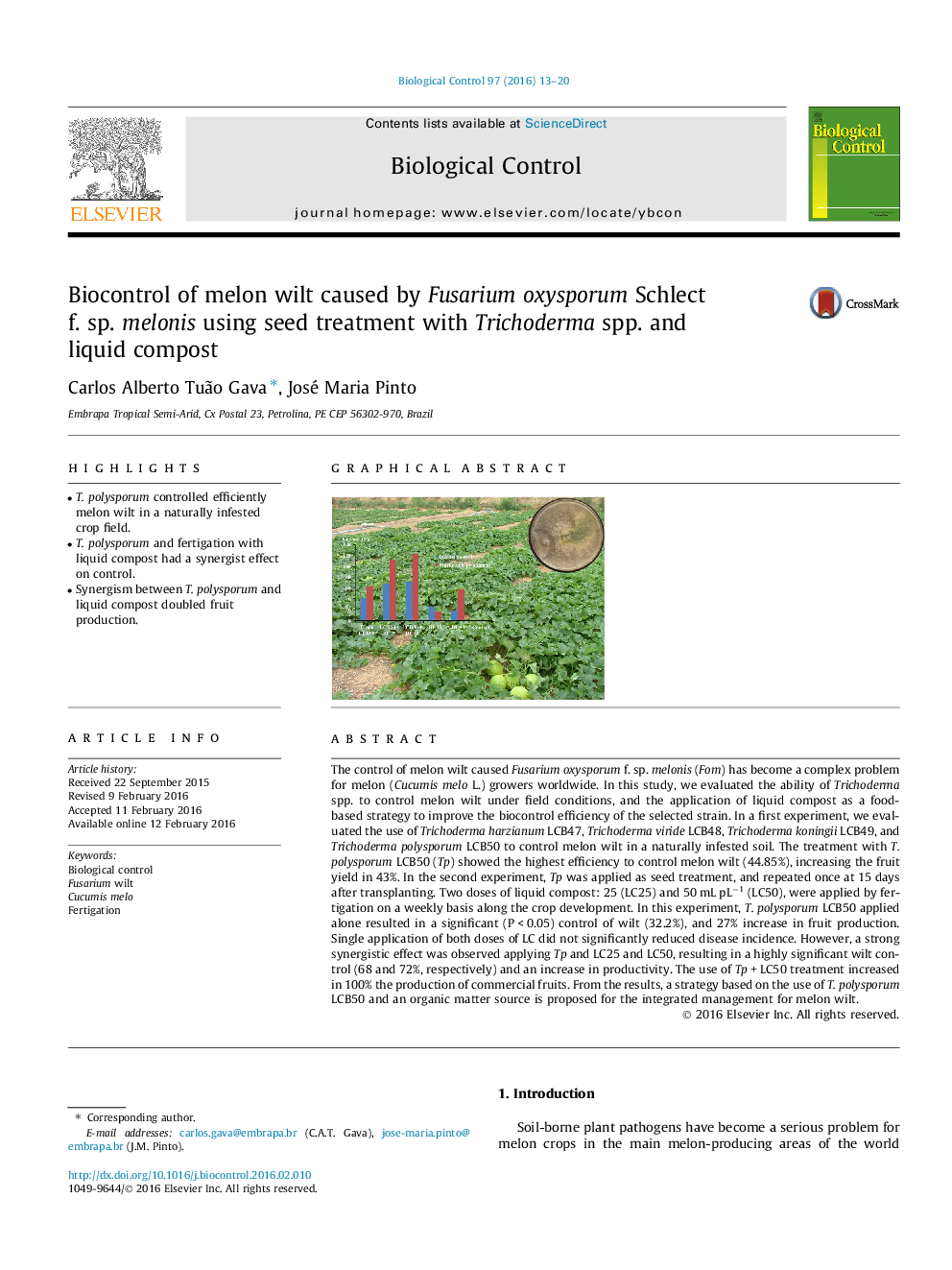| Article ID | Journal | Published Year | Pages | File Type |
|---|---|---|---|---|
| 4503682 | Biological Control | 2016 | 8 Pages |
•T. polysporum controlled efficiently melon wilt in a naturally infested crop field.•T. polysporum and fertigation with liquid compost had a synergist effect on control.•Synergism between T. polysporum and liquid compost doubled fruit production.
The control of melon wilt caused Fusarium oxysporum f. sp. melonis (Fom) has become a complex problem for melon (Cucumis melo L.) growers worldwide. In this study, we evaluated the ability of Trichoderma spp. to control melon wilt under field conditions, and the application of liquid compost as a food-based strategy to improve the biocontrol efficiency of the selected strain. In a first experiment, we evaluated the use of Trichoderma harzianum LCB47, Trichoderma viride LCB48, Trichoderma koningii LCB49, and Trichoderma polysporum LCB50 to control melon wilt in a naturally infested soil. The treatment with T. polysporum LCB50 (Tp) showed the highest efficiency to control melon wilt (44.85%), increasing the fruit yield in 43%. In the second experiment, Tp was applied as seed treatment, and repeated once at 15 days after transplanting. Two doses of liquid compost: 25 (LC25) and 50 mL pL−1 (LC50), were applied by fertigation on a weekly basis along the crop development. In this experiment, T. polysporum LCB50 applied alone resulted in a significant (P < 0.05) control of wilt (32.2%), and 27% increase in fruit production. Single application of both doses of LC did not significantly reduced disease incidence. However, a strong synergistic effect was observed applying Tp and LC25 and LC50, resulting in a highly significant wilt control (68 and 72%, respectively) and an increase in productivity. The use of Tp + LC50 treatment increased in 100% the production of commercial fruits. From the results, a strategy based on the use of T. polysporum LCB50 and an organic matter source is proposed for the integrated management for melon wilt.
Graphical abstractFigure optionsDownload full-size imageDownload as PowerPoint slide
